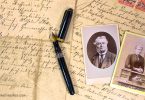Once you have a clue or two from family stories and/or census records, you can go to immigration and naturalization records to look for confirmation of what you discovered. You can find these records at the National Archives (if you want to go look in person), and on Ancestry and FamilySearch (if you prefer to look online). If you want to be exceptionally thorough, as any good genealogist should, you should check all these sources. If you can’t make it to the National Archives in person, you can find a listing of their indexes on their website, which you can use to make a written request to them for a lookup of a record for you. With any luck, your ancestor’s place of origin will be confirmed, and you may even get the name of the ship they came over on, as well as the port they departed from, the port they arrived at, and the year they came, as well as their age upon arrival, whether they have any relatives already in the United States, what their occupation is, and where they are planning to go upon entrance into the United States.






